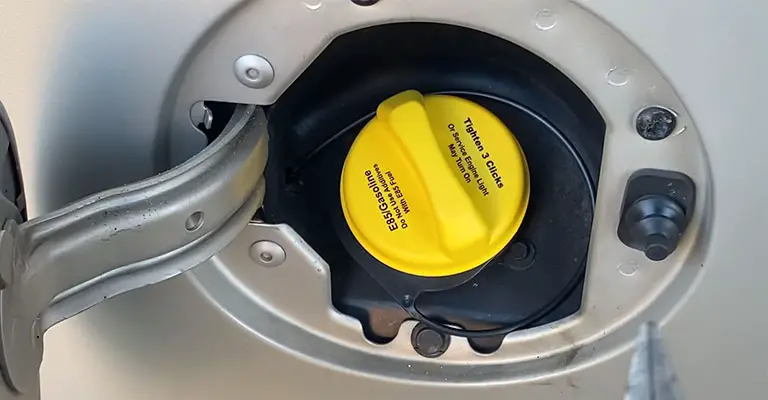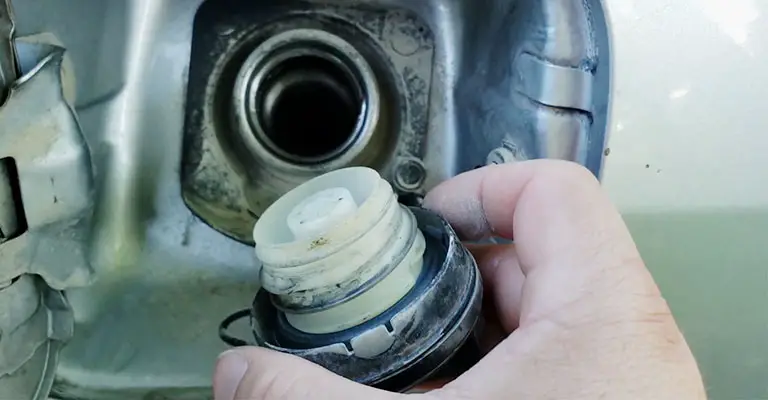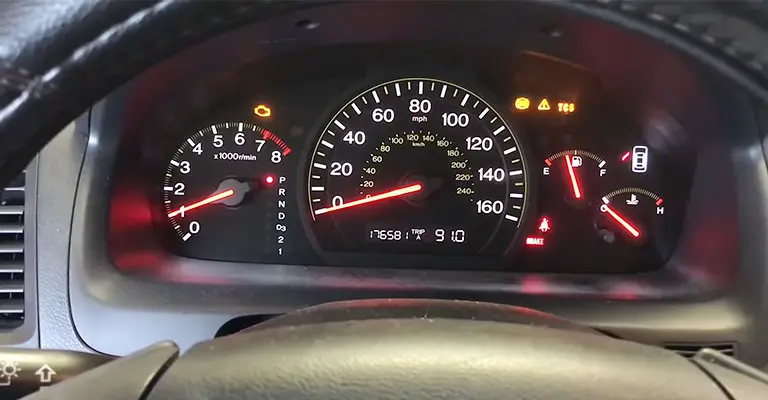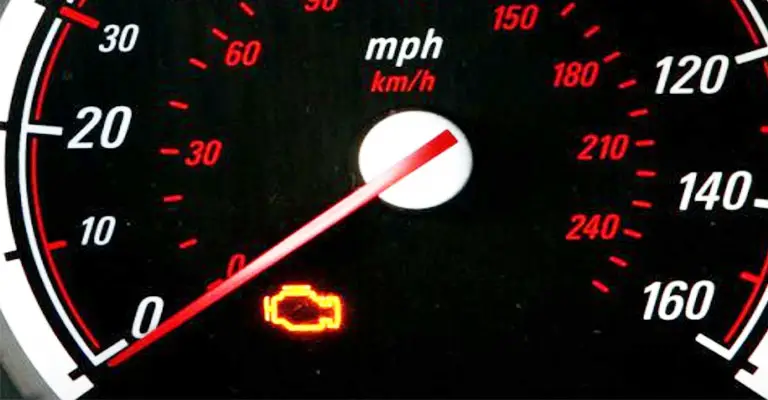When the check engine light turns on, it is natural to become nervous. You don’t know what the problem is and want to fix it as soon as possible.
You may be wondering what’s wrong with your car and whether or not it will cost a lot of money to fix. If you are not mechanically inclined, it can be difficult to diagnose the problem yourself.
There are times when the check engine light will come on for the simplest of reasons like you forgot to tighten the gas cap, or the gas cap is loose. This happens more often than you might think.
After experiencing a check engine light, be sure to pay attention to your dashboard. You may have a loose gas cap if the light keeps coming on and then going off after tightening the gas cap.
When you drive for several minutes, the check engine light should go out if a loose gas cap causes it.
Getting a replacement gas cap is easy if you discover your gas cap is faulty or loose. To ensure a tight fit, you should ensure the gas cap fits your vehicle’s make and model.

Can The Check Engine Light Turn On If The Gas Cap Is Loose?
Check engine lights are often dismissed as nothing to worry about because a loose gas cap usually causes them. Of course, the check engine light can be triggered by a loose gas cap, but there are dozens of other reasons.
There would be a possibility that a loose gas cap can cause the check engine light to illuminate (CEL), especially if the vehicle was built after 1996. However, there are other reasons for the warning besides a loose fuel cap.
It will take some detective work on your part (or that of your mechanic) to find out whether the cap is responsible. Nevertheless, it’s helpful to understand how the cap can trigger a CEL before you start troubleshooting.
Evaporative emission control (EVAP) is a function of the gas cap in modern vehicles. The EVAP system prevents them from entering the atmosphere by trapping and purging harmful fuel vapors.
The EVAP system in most cars built after 1996 (and all cars built after 1999) is what is known as an “enhanced” EVAP system. The fuel tank and associated components of enhanced systems can perform self-tests to detect vapor leaks.
Powertrain control modules (PCMs) monitor leaks in the EVAP system, which is often referred to as the engine computer.
PCMs, turn on the CEL when they detect a leak – whether it’s a loose gas cap or another component of the EVAP system. They also store a diagnostic trouble code (DTC) corresponding to the leak.
Is Your Gas Cap Loose? Here’s How to Check It.

It may be necessary to use the extra light to check whether the gas cap is cracked. First, take a look at the gas cap. Is there any cracking, chipping, or tearing? Solving your problem with a simple gas cap replacement may be possible.
Ensure that the seal between the gas cap and the filler tube is intact and free of tears or cracks that could allow vapors to escape. Ensure the gas cap is not damaged before fully installing it.
After you have tightened the gas cap, listen for it to click into place. The cap needs to be replaced if it does not click into place or is loose after being clicked into place.
Do You See A Check Engine Light Because Of A Loose Fuel Cap?

The PCM can turn on the CEL for a variety of reasons. A scan tool or code reader can be used to retrieve the DTCs from the PCM’s memory to determine whether the gas cap might be the culprit. You can have a professional retrieve the codes on your behalf if you wish.
PCMs normally store a code for an EVAP leak in their memory when the gas cap is to blame for a CEL. Codes P0455 and P0457, for example, describe the detection of evaporative emission leaks (large leaks) and loose or off-fuel caps, respectively.
After Tightening The Gas Cap, How Long Will The Check Engine Light Remain On?
Check your gas cap as soon as it’s safe to do so. Approximately 10 or 20 miles after returning to the road, your check engine light should turn off.
It may be necessary to run the “Drive Cycle” to clear the service engine light, depending on the fault.
It may take some time for the alarm to clear if you just drive because the OBD computer is looking for certain “tests.”.
Common Causes of a Check Engine Light

Check engine lights are caused by several factors, including:
- The sensor that fails to detect mass airflow
- The trouble with the catalytic converter
- Oxygen sensor failure
- Spark plug or wire that is worn out
- Gas cap with a crack or other defect
- The cap on the gas tank is loose
You might feel relieved now that you know the most common causes of a check engine light. Once you know your check engine light has come on, pull over the car as soon as possible and perform an inspection.
Loose Gas Cap Check Engine Light Reset
The most common causes of EVAP leak codes are loose or faulty gas caps, though the PCM can log EVAP leak codes for several reasons. In this case, before trying anything else, make sure the gas cap is intact.
The cap should be tightened completely. The cap will “click” into place on most vehicles when it’s securely fastened. EVAP-related codes should be cleared from the PCM’s memory after you tighten the gas cap.
A tool must be used to clear the codes, as they will not go away on their own. However, once you have driven the vehicle, you can check if the codes have returned.
Tightening down the gas cap likely fixed the CEL if it doesn’t return after a few weeks of driving.
What If The Gas Cap Doesn’t Cause The EVAP Leak Code?
When you tighten down the gas cap and the EVAP leak code returns, you may consider swapping out the cap since they are relatively inexpensive.
However, the leak may be occurring elsewhere in the EVAP system if you still find the code after replacing the cap.
Identifying an EVAP leak that isn’t caused by the gas cap can be challenging. However, when smoke starts billowing out of the EVAP system, the leak will usually be visible.
Professional smoke machines can be used to force smoke into the system to cause the leak to be visible.
Conclusion
You don’t always have to worry about your car’s check engine light when it comes to troubleshooting it. Drive the car after you secure the gas cap. After you drive the car, the light will go out on its own.
Don’t rush. There is usually a charge for resetting the warning light at any repair station if you would rather not wait. In the case of the low pressure in the tank, the gas cap activated the emission system warning.

Leave a Reply